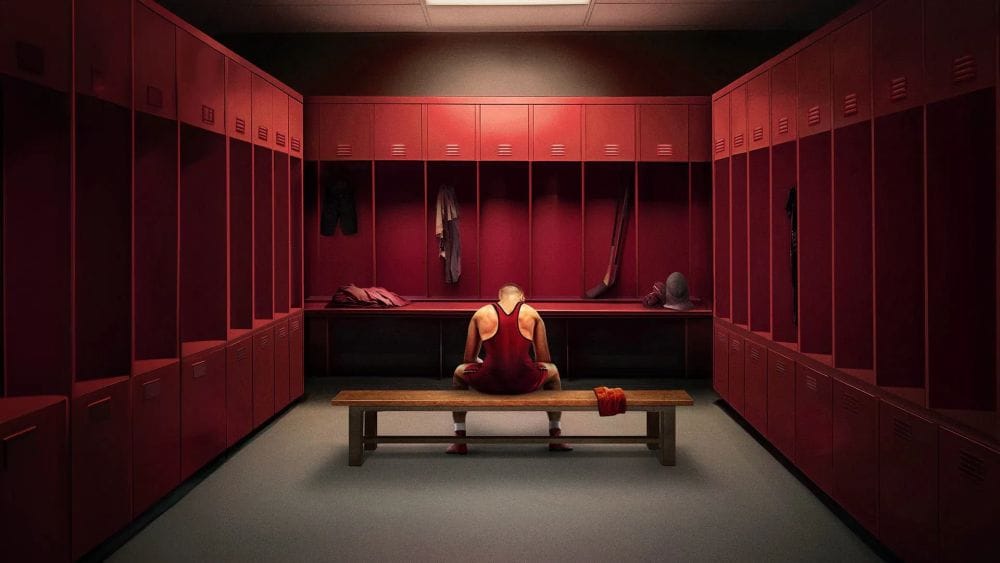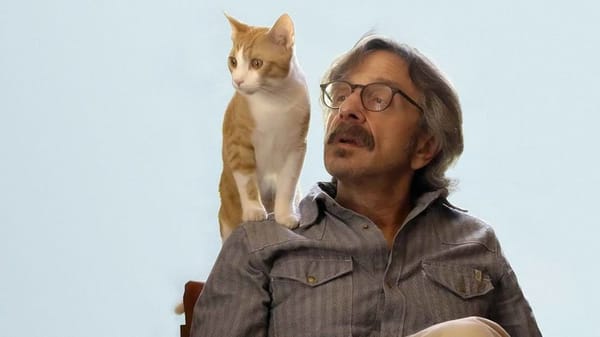Surviving Ohio State (dir. Eva Orner)

America is a deeply weird place when it comes to sport. I mean, it’s deeply weird about a lot of things. But in this instance, we’re talking sport. The extreme pomp and circumstance like those seen in the opening moments of Surviving Ohio State is so intensely unappealing; it just gives off a threatening aura. A machine made to offer hope when really it’s just a distraction from those in power making money off the literal backs of those putting their body and their minds on the line. And just about every single documentary that we see about the subject does little to give a different impression. Amir Bar-Lev’s Happy Valley, Jon Shenk and Bonni Cohen’s Athlete A, Nancy Schwartzman’s Roll Red Roll… dispiriting, disturbing, despicable, every last one of them.
Director Eva Orner is Australian and I’d like to think that that lent her something of a unique perspective into this latest in a depressingly ever-expanding list of documentaries about education institution sexual assault cases. Orner, the Oscar-winning producer of Alex Gibney’s Taxi to the Dark Side and acclaimed director in her own right, would appear to have no preordained perspective on Ohio State University (OSU)—or any American institutions for that matter. Entering this arena with clear eyes that remain unphased by the bizarre tribalist patriotism that we often see in stories such as these. Tribalist patriotism that we see throughout this movie from just about everyone towards OSU, including the very people it sacrificed just to win some prizes. The people who experienced sexual abuse and misconduct from a physician and whose complaints were met with silence. Because to recongise that would be inconvenient to their reputation and their ability to commodify young athletes.
Personally, as a viewer who, like Orner, is also not American, I find on-screen portrayals of American college life are about as foreign of a concept as you can get. Accurate or not, it just comes across like an entirely different planet. I appreciated that this doc ditches with the grandiose rah-rah attitudes pretty early on because, at least to me, that didn’t seem like the real story here that Orner wanted to tell. That a place of such high regard could cover up heinous crimes is probably the least interesting thing about Surviving Ohio State. That these vaunted hallowed halls mask such callousness towards the vulnerable people it theoretically has a duty of care for, should not come as a surprise. And certainly not to anybody who has watched the United States of America from the position of an outsider with no stakes in the game.

Instead, the strength of Orner’s film is in how it works as a piece of activism. As a big whirring red siren for men to tear down the walls of hyper-rigid masculinity. There’s a moment where one of the male subjects says he was inspired by the bravery of the younger women of Michigan State University who endured their own sexual misconduct sporting scandal. Which, when coming from a man in his 50s, really struck me as something profound. Which goes some way to showing how rare it is. It shouldn’t but it is. There is real weight in letting these interviews unfold as they do, these men stammering at words that should be so ordinary, but which continue to hold a power over them. Power that they were wildly unprepared to understand and to deal with because of what society decides men should know about the world. And, more importantly, what they shouldn’t. We are briefly shown the online reaction to such claims, that they must be false because a man would fight back, which proves the point even further without belabouring it. It’s the sort of story you want to show to young men across the world who still like to claim that women allege rape to disguise regret, or question why they didn’t say anything sooner. That the one person who came to their defence was a woman (Charlotte Remenyik, the mens and womens fencing coach) speaks volumes.
As a work of craft, there isn't anything here that goes beyond what you would expect. It's polished and well-made. But its success is in the things it wants to say and how it works its way towards letting its subjects say them for themselves. 177 people came forward at the time, survivors of an old-fashioned pervert and sex pest that was allowed to roam lockers and medical rooms for decades by those in power. “I didn’t know what I didn’t know”, says one of the survivors. And that is what I think Orner is trying to get at. People will always try to say that, oh, gee, it was just one person. One bad apple. Or, oh, gee, what could we do? Well, if this film is worth anything, the answer is a hell of a lot more than nothing. Because the problem isn't just Ohio State University. We know that. Surviving Ohio State hasn't been overly sensationalised. It's sombre but engrossing. Respectful in its telling of this tragic story. And it understands that we likely need to move on from mere expose into changing the systems that allow it in the first place.
If you would like to support documentary and non-fiction film criticism, please consider donating by clicking the above link. Any help allows me to continue to do this, supports independent writing that is free of Artificial Intelligence, and is done purely for the love of it.



